And I has plans.
And not orchid based. For a change.
Kent has some botanical rarities for sure, not least orchids. But also is home to some rare animals too, two butterfly species, The Duke of Bugundy and the Heath Fritillary.
The Duke you know about, and flies in May, so is gone for another year, but the Heath Frit is now coming into season, and it seems we visit its national stonghold in Blean once every two years, so this was a year for a visit.
Only they move year on year. The Heath is known as the "Woodsman's Fried", as it likes coppiced and cleared woodland, where it's larval foodplant, Cow Wheat can grow. So, it really needs man to survive now,. And here in Kent is its most successful reintoduction, and has thrived.
But you have to know where the latest cleared area is, as that is where the butterflies would be.
And with the lockdown, Kent Wildlife Trust has closed many reserve car parks, making visits, now legal, even more difficult.
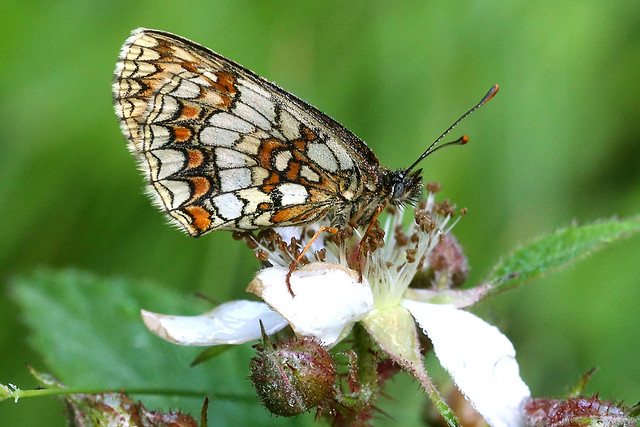 However, with my own bush telegraph of spies, passing me hints and rumours, I knew of a second site away from the main one in East Blean, in the nearby West Blean.
However, with my own bush telegraph of spies, passing me hints and rumours, I knew of a second site away from the main one in East Blean, in the nearby West Blean.Cunning.
We left home before half six, driving to Canterbury, then round the ring road, totally deserted, through the retail estate along the Stour to Sturry.
From there, up the down, cross country, wast Wildwood, and down a dead end lane, where a dogwalker had just taken one of the two spaces, meaning we had the other.
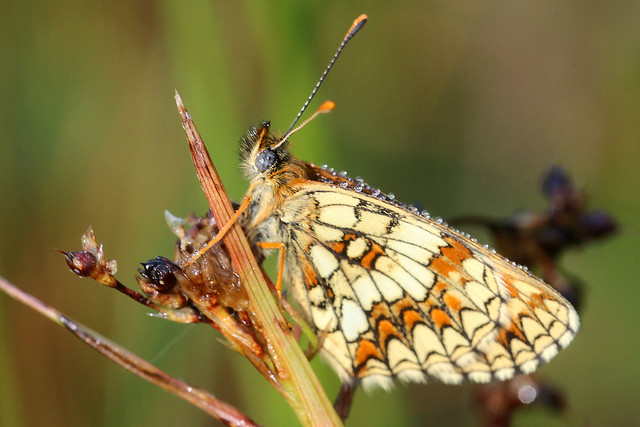 The Heath Fritillary caterpillars will only ear the leaves of Cow Wheat, quite a rare plant in Kent, and throughout England now, so to find the butterflies, look for the Cow Wheat.
The Heath Fritillary caterpillars will only ear the leaves of Cow Wheat, quite a rare plant in Kent, and throughout England now, so to find the butterflies, look for the Cow Wheat.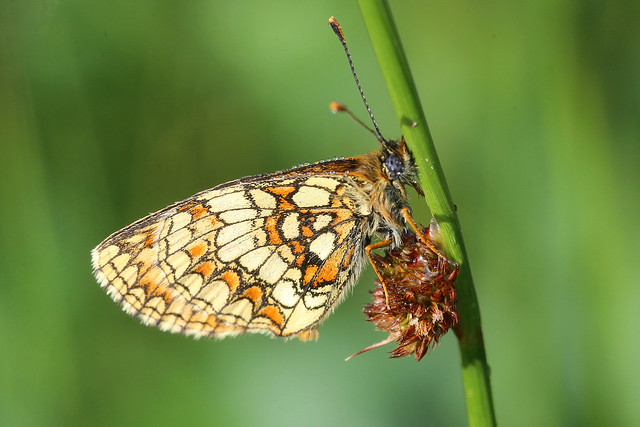 We walk down the main path, then take a path off it, as even before we are through the stile gate, I see a roosting butterfly. It was a Heath.
We walk down the main path, then take a path off it, as even before we are through the stile gate, I see a roosting butterfly. It was a Heath. I had brought by ring flash, so have to fit that to the lens, line up a shot, and: FLASH. Aha!
I had brought by ring flash, so have to fit that to the lens, line up a shot, and: FLASH. Aha!I take a dozen shots, then we walk on, and soon on either side in deep shade is the Cow Wheat. We see no other butterflies, but they would be about. Bearing in mind it wasn't yet half seven.
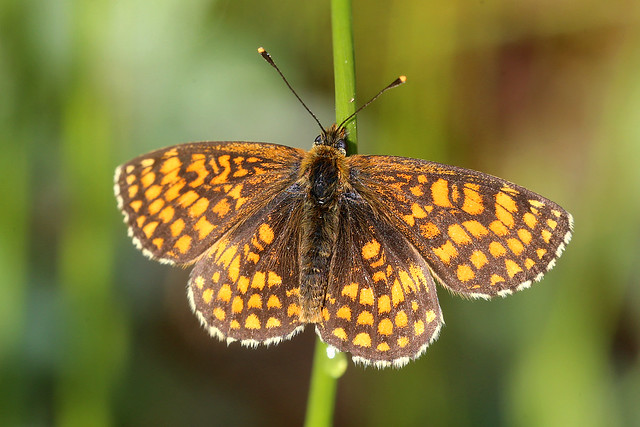 In the end I find about a dozen Heaths, roosting on stems of grass or leaves of shrubs, but the rising sun was reaching in, and once sunlight reached a sleeping butterfly, it would open its wings to bask and warm its flight muscles.
In the end I find about a dozen Heaths, roosting on stems of grass or leaves of shrubs, but the rising sun was reaching in, and once sunlight reached a sleeping butterfly, it would open its wings to bask and warm its flight muscles. I find three or four warming up and displaying their wings well. As good as I'd hoped for.
I find three or four warming up and displaying their wings well. As good as I'd hoped for.After an hour we were done, so walk the short distance back to the car, and from there drive back down to Sturry and on to Westbere.
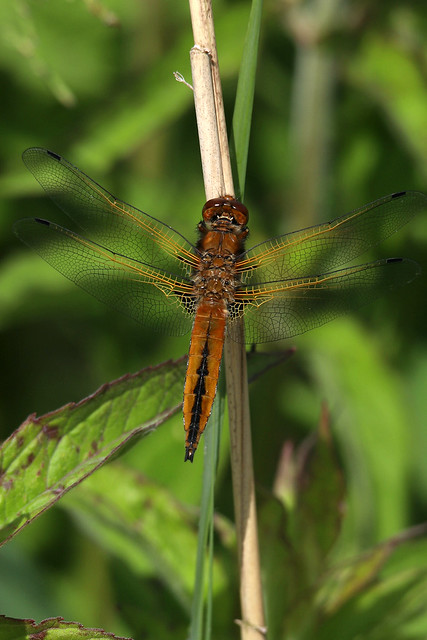 Westbere is a nature reserve and fishing lake, as well as a village, and there is a rich colony of dragonflies and other insects there. I am normally orchid-centric, but trying to branch out. At Westbere is one of the rare places where the Norfolk Hawker can be found. I have snapped them before, but why not give it a try as we were nearby? And Jools had never been to the reserve, just to the crossing over the railway which is good for snapping railtours.
Westbere is a nature reserve and fishing lake, as well as a village, and there is a rich colony of dragonflies and other insects there. I am normally orchid-centric, but trying to branch out. At Westbere is one of the rare places where the Norfolk Hawker can be found. I have snapped them before, but why not give it a try as we were nearby? And Jools had never been to the reserve, just to the crossing over the railway which is good for snapping railtours.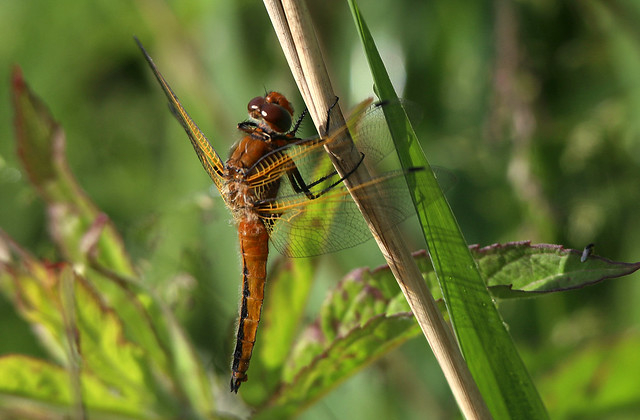 We park at the end of another dead end lane, right by the old lever crossing, then lugging the new camera and big boy lens, we walk down to the crossing, over the lines and back down again to the entrance.
We park at the end of another dead end lane, right by the old lever crossing, then lugging the new camera and big boy lens, we walk down to the crossing, over the lines and back down again to the entrance.There is a walk on a piece of land between to dykes, then along the banks of the Great Stour. What you see is what you get.
So, we set off, walking slowly trying to see any roosting dragons.
After a while I see a dragon, light brown in colour, it is happy enough to get some close up shots, but not that close with the non-macro lens. Then I see a bright blue male, might be the same species, or not. art of the fun is identifying them once home.
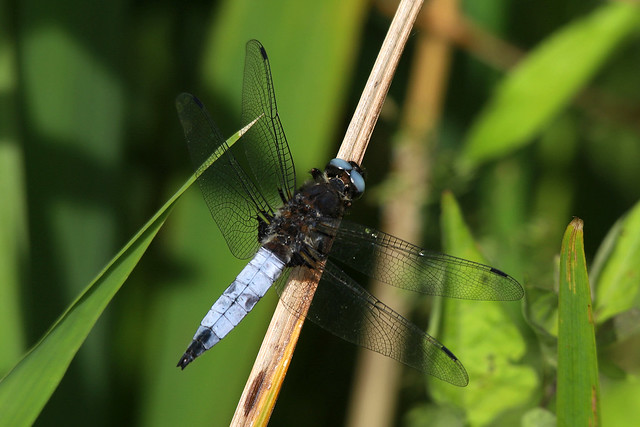 We walk to the river and then along some way. It would have been pleasant, but there were two chansaws working hard to outdo each other, and I just wanted peace and nature. So we turn for home.
We walk to the river and then along some way. It would have been pleasant, but there were two chansaws working hard to outdo each other, and I just wanted peace and nature. So we turn for home.All three dragonflies were of a rare species apt for its name, Scarce Chaser, so very happy to see three very different examples.
We reach the car, then drive back home over the marshes via Grove Ferry and Preston. We would have been home by 11, but we went to the pet store to get some wild bird seed.
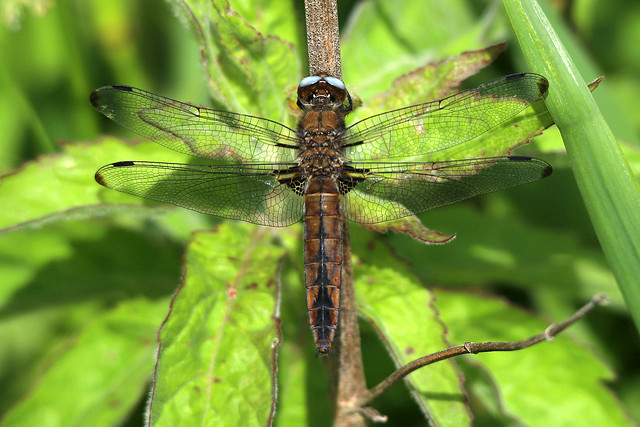 We had to wait in line outside for 20 minutes, then go inside, pick up the bag of peanuts, and go to pay.
We had to wait in line outside for 20 minutes, then go inside, pick up the bag of peanuts, and go to pay.THEN back home.
For a brew, some chocolate, fruit and then for me to prepare lunch.
Roast lamb, stir fry and the rest.
I cut holes in the joint, and put in slivers of garlic and rosemary leaves into the meat.
Then cook for an hour, roast the potaotes and cook the Yorkshire puddings. So, at nearly three, it was done.
And in 2o minutes we make it all vanish, as well as the last bottle of pink fizz. We are sure there is no more.
Again, we tidy up, make a brew and have more chocolate, amazed that it was nearly six and another weekend had slipped by.
Instead of supper, we have ice cream, and generally get ready for the working week.
A final round of #wildflowerhour on Twitter, and we are done.
Phew.

No comments:
Post a Comment